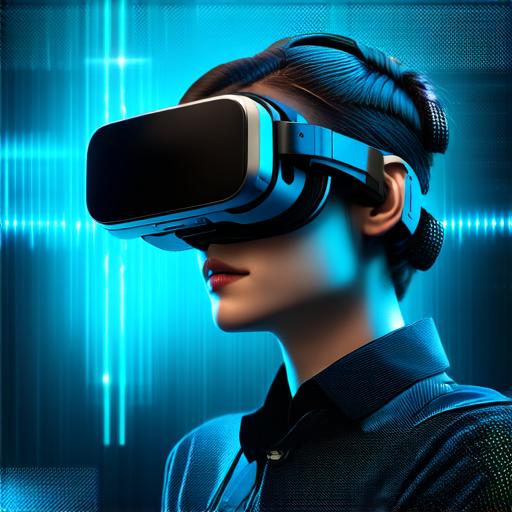What is Virtual Reality?

Virtual reality (VR) is a computer-generated simulation of a 3D environment that users can interact with in real-time using specialized equipment such as headsets or gloves equipped with sensors. VR technology allows users to enter a virtual world and interact with it as if they were really there, by moving their bodies and interacting with virtual objects.
Virtual reality has been around for several decades, but recent advancements in technology have made it more accessible and affordable than ever before. In the gaming industry, VR has become increasingly popular, providing players with immersive experiences that allow them to step into the game world and take on a new persona. VR can also be used in fields such as education, training, and therapy, allowing users to experience real-life scenarios in a safe and controlled environment.
What is Augmented Reality?
Augmented Reality (AR) is a technology that overlays digital information on the real world, enhancing the user’s perception of their surroundings. AR can be experienced through a smartphone or tablet equipped with a camera and sensors, allowing users to see virtual objects superimposed on the real world.
AR has been used in a variety of applications, such as gaming, marketing, and education. For example, AR-enabled apps allow users to visualize how furniture would look in their home before making a purchase, or to learn about historical landmarks by overlaying digital information on top of them.
Differences between VR and AR
The main difference between VR and AR is that VR creates a completely immersive experience, while AR adds digital elements to the real world. In other words, VR transports users into a virtual world, while AR enhances their perception of the real world.
Another key difference is that VR requires specialized equipment, such as headsets or gloves equipped with sensors, while AR can be experienced through a smartphone or tablet. This makes AR more accessible and affordable than VR, and allows for a wider range of potential applications.
How VR and AR can enhance user experience
Both VR and AR have the potential to enhance user experience in a variety of ways. In the gaming industry, VR provides players with immersive experiences that allow them to step into the game world and take on a new persona. This can lead to increased engagement and a more enjoyable gaming experience.
AR can also be used to enhance user experience by providing real-time information and context to users as they interact with their surroundings. For example, an AR app could provide information about historical landmarks as a user walks past them, or allow users to visualize how furniture would look in their home before making a purchase.
Case studies and personal experiences
One example of VR being used for educational purposes is the “Anatomely” app, which allows medical students to explore the human body in 3D using VR technology. This app has been shown to improve students’ understanding of complex anatomy concepts and has led to increased engagement and motivation.
In the gaming industry, the release of the Oculus Quest 2 has made VR more accessible and affordable than ever before, leading to a surge in interest from gamers around the world. The Quest 2 allows users to play games on their TV or computer without the need for a high-end PC or specialized equipment.
One example of AR being used in marketing is the IKEA Place app, which allows users to visualize how furniture would look in their home before making a purchase. This app has been shown to increase sales and improve the overall shopping experience for IKEA customers.
